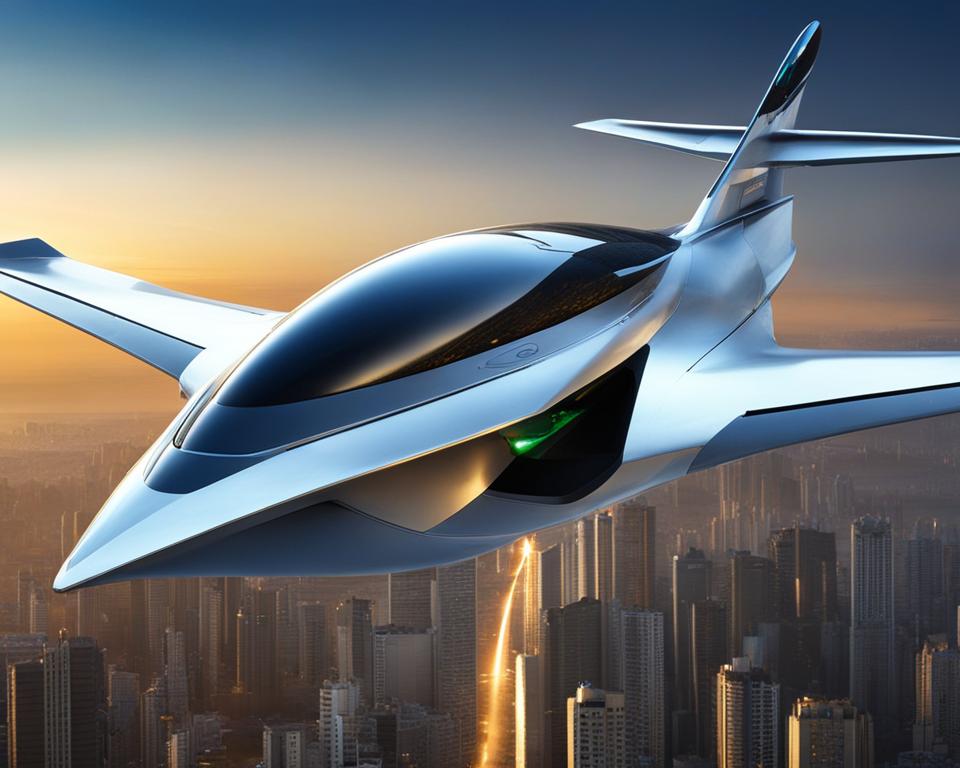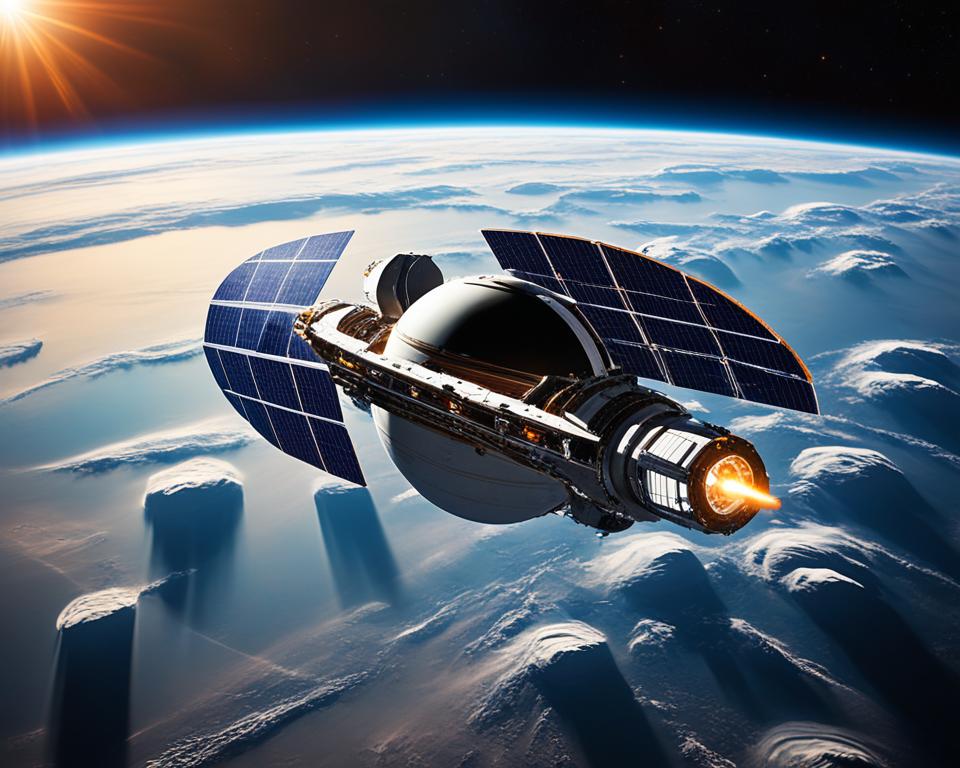Adverts
A Space exploration has been a fascinating journey for humanity, expanding our understanding of universe and triggering technological advancements significant. As the International Space Station (ISS) nears the end of its operations in 2031, you may wonder what the future of space exploration and how this will affect our search for cosmic knowledge.
Adverts
A ISS, the result of a global collaboration between the United States and Russia, consolidated humanity as a space species. However, the closure of ISS does not mean the end of space exploration. News commercial space stations are being planned to take their place in Earth's orbit, boosting research and providing new opportunities for human expansion in space.
Furthermore, NASA has ambitious plans for the future. She plans to return to the Moon and has the ultimate goal of reaching Mars, establishing bases and exploring our closest cosmic neighbors. These missions will not only open the doors to new scientific discoveries, but they will also advance our technological capabilities and push us to seek a deeper understanding of universe.
Adverts
Main Conclusions:
- The International Space Station (ISS) will come to an end in 2031, but the space exploration will continue.
- News commercial space stations are being planned to take the place of the ISS.
- NASA has plans to return to the Moon and has the ultimate goal of reaching Mars.
- Space exploration drives technological advancements It is scientific discoveries.
- O future of space exploration It’s promising and it’s just getting started.
The History of the ISS: A Human Construction in Space
Construction of the ISS began in 1998, with the launch of the Russian Zarya module. Dozens of countries, including the United States and Russia, worked together on this project, resulting in a space station the size of a football field and weighing more than 400 tons.
The ISS has been continuously inhabited since 2000 and has been the site of thousands of scientific experiments, contributing to the advancement of medicine and space science. This international collaboration represents an important milestone in the history of space exploration, showing that, despite differences and borders, humanity is capable of joining forces towards a common goal: exploring the unknown beyond Earth.
The construction and maintenance of the ISS required hard and meticulous work on the part of the astronauts involved. Each module was carefully planned and launched into space, being docked to the station through spacewalks. These spacewalks, also known as extravehicular activities (EVA), allow astronauts to perform repairs and install new equipment on the station.
“The ISS is a symbol of international collaboration and the human spirit of exploration. It's an incredible achievement that allows us to learn more about space and our place in it. universe.” – Franklin Chang Díaz, NASA astronaut
Since your conclusion, the ISS has been the scene of important scientific research. The astronauts on board carry out experiments in various areas, such as biology, physics, chemistry and medicine. These studies help improve our understanding of space conditions and provide valuable insights for future space missions.
See too:
Furthermore, the ISS is an impressive example of how cooperation between nations can lead to significant advances in space exploration. Over the decades of construction and operation of the station, people from different countries and cultures worked together, overcoming linguistic and political barriers towards a common goal.
A history of the ISS shows us that space exploration is a collective human endeavor. It is a demonstration of humanity's potential to overcome challenges and achieve great things through collaboration. The ISS is inspiring proof that, together, we are capable of building a future beyond Earth.
The Future After the ISS: Commercial Space Stations
With the end of ISS in view, it is expected that new commercial space stations take their place in Earth's orbit. Companies like Axiom Space are already planning to attach modules to the ISS in 2025, which could eventually form their own station. These stations can serve as research laboratories and even as destinations for space tourists. A NASA has also signed contracts for the development of new space stations, showing that the future of space exploration includes a continued human presence in orbit around our planet.
| Spacial station | Company/Organization | Function |
|---|---|---|
| Axiom Station | Axiom Space | Serve as a research and space tourism laboratory |
| Gateway Station | NASA and International Partners | Serve as an outpost for lunar missions and scientific studies |
| Roskosmos Station | Roskosmos (Russian Space Agency) | Serve as additional modules for research and international collaboration |
The construction of commercial space stations represents a new chapter in space exploration, with private companies playing an important role alongside government space agencies. These stations provide opportunities for scientific advances, technological development and expansion of space tourism, boosting the commercial space sector and opening doors for a greater human presence in space.
“The era of commercial space stations is upon us, and with it, the future of space exploration becomes even more exciting and promising.”
Return to the Moon: Artemis Program
With the end of the ISS, NASA will be able to direct its resources to the Artemis program, which aims to return to the lunar surface. Scheduled for 2024, the program will send astronauts again to the Moon, promoting advances in human spaceflight. Additionally, NASA plans to build a new space station near the Moon, which could serve as an outpost for astronauts traveling to our natural satellite. O Artemis program marks an important step in space exploration, towards Mars.

O return to the moon through Artemis program It is an exciting achievement for humanity. This new mission will bring countless opportunities for research and discovery, as well as opening doors for even more ambitious future space flights. The goal is to establish a lasting and sustainable presence on the Moon, paving the way for exploring Mars and beyond.
“The Artemis program represents a new era in space exploration, bringing the possibility of carrying out scientific discoveries valuable resources and advance technology to power future space missions.” – NASA Director, John W. Smith.
Benefits of the Artemis Program
The Artemis program offers a number of benefits and opportunities for space exploration:
- Advances in human spaceflight: O return to the moon will enable the enhancement of technologies and skills needed for long-duration space travel, setting the stage for future missions to Mars.
- Scientific research: The presence of astronauts on the Moon will make it possible to carry out experiments and research that will contribute to the advancement of knowledge in areas such as geology, astrophysics and biology.
- Lunar resources: The Moon has natural resources, such as water and minerals, which can be explored for future space missions and even for the establishment of sustainability bases.
- International partnerships: The Artemis program aims to strengthen international partnerships in space exploration, allowing different countries to collaborate and share knowledge to achieve common goals.
Artemis Program Internships
The Artemis program is made up of different stages that will progressively lead to the achievement of a permanent presence on the Moon:
- Artemis I and II Missions: Unmanned missions that will test and validate the capabilities of NASA's Space Launch System and Orion spacecraft.
- Artemis III Mission: The first manned mission of the Artemis program, which will return astronauts to the Moon for the first time since 1972.
- Establishment of a lunar base: NASA plans to build a lunar base near the Moon's south pole, taking advantage of available resources and establishing a lasting presence.
- Exploration of Mars and Beyond: The Artemis program is part of a larger strategy to explore Mars and beyond, using the Moon as a springboard for increasingly distant space missions.
The Artemis program represents an exciting new chapter in the history of space exploration, promoting scientific and technological advances and enabling a greater understanding of the universe in which we live.
| Benefits of the Artemis Program | Artemis Program Internships |
|---|---|
| Advances in human spaceflight | Artemis I and II missions |
| Scientific research | Artemis III Mission |
| Lunar Resources | Establishment of a lunar base |
| International partnerships | Exploration of Mars and beyond |
Possibilities for Reusing the ISS
As it approaches the end of its useful life, the question arises as to what will be done with the International Space Station (ISS). Fortunately, there are interesting proposals to reuse parts of the ISS and avoid its complete destruction. Some projects have suggested using metal from the station or repurposing modules for future projects. The idea is to preserve the ISS resources and promote circular economy in space.
Although it is not yet known for certain whether NASA is open to these ideas, it is possible that considerations will be made as the deadline for removing the ISS approaches. Reusing the ISS would be a smart way to take advantage of its structure and investment, contributing to the sustainability of space activities.
"A reuse of the ISS is a unique opportunity to apply the principles of circular economy in space, reducing waste and maximizing the value of available resources.”
Preserving resources and promoting the circular economy
A reuse of the ISS it can involve several possibilities, from harnessing structural metal to create new structures, such as satellites or habitats, to repurposing modules for future commercial space stations. These strategies would contribute to the circular economy, minimizing the need to manufacture new components from scratch and making the most of what is already available in space.
In addition reuse of the ISS would have positive impacts on the sustainability of space activities. By avoiding the complete destruction of the station, the production of a significant amount of waste and space debris is avoided, reducing the risks of collisions and pollution in space.
Partnerships and international collaboration
For the reuse of the ISS to be a reality, close cooperation between space agencies and private companies involved in the development of space technologies would be necessary. Public-private partnerships could be established to make station reuse projects viable, taking advantage of the knowledge and resources of each entity.
International collaboration would also be essential in this process. After all, the reuse of the ISS can pave the way for sharing resources and knowledge between different countries and organizations, strengthening cooperation and promoting joint advances in space exploration.
Your role in the circular space economy
You, as a space exploration enthusiast, can play an important role in promoting the circular economy in space. By supporting initiatives that aim to reuse space resources, such as the ISS, you contribute to the sustainability of activities in space and to the expansion of human knowledge about the universe.
- Find out about ISS reuse projects and share this information with others;
- Participate in discussions and debates about the spatial circular economy;
- Be alert to partnership opportunities between private companies and space agencies;
- Consider supporting organizations and startups that are working on reusing space resources.
Together, we can contribute to a sustainable and promising future for space exploration, making the most of available resources and promoting the circular economy both on Earth and in space.
Technological Advances and Scientific Discoveries
Over the years, space exploration has generated technological advancements It is scientific discoveries significant. The research carried out on the ISS allowed studies on diseases such as Alzheimer's and Parkinson's, investigation of new states of matter and development of techniques for growing food in space.
Additionally, missions to Mars and the exploration of comets and other celestial bodies have expanded our knowledge of the universe. Space exploration will continue to drive science and technology into the future.
| Technological advancements | Scientific Discoveries |
|---|---|
| Development of new propulsion and space navigation technologies | Research into the effects of microgravity on the human body |
| Creating lighter, stronger materials for use in spacecraft | Study of the formation and evolution of planets and stars |
| Advances in communication and data transmission in space | Analysis of lunar and Martian rock samples |
Those technological advancements have direct impacts on our daily lives, resulting in innovations in medicine, telecommunications, materials and much more. Furthermore, scientific discoveries provide a greater understanding of the universe and open doors to new questions and research.
ISS Contributions
“Research on the ISS has allowed significant advances in several scientific and technological areas. It is a laboratory orbiting the Earth, where scientists can investigate the effects of microgravity and the space environment in complex experiments.” – Dr. Mark Smith, space scientist
The ISS has been fundamental in the advancement of scientific knowledge. Its facilities and equipment offer the opportunity to carry out experiments that would be impossible to carry out on Earth. The microgravity environment allows us to explore the effects of weightlessness on living organisms, materials and physical processes, expanding our understanding of the limits of physics and biology.
Additionally, the ISS has served as a laboratory for the development and testing of new space technologies, such as water and air recycling systems, life support systems, and communications technologies. These innovations have applications for both future space exploration and improving life on Earth.
By opening new paths in space exploration, technological advances and scientific discoveries are important drivers of humanity's evolution, opening doors to future achievements and unraveling the mysteries of the universe.
Conclusion
The future of space exploration is promising, even with the imminent end of the ISS. New commercial space stations, the Artemis program, and technological advances will continue to drive human exploration of space. International collaboration and the pursuit of knowledge and scientific discoveries will take humanity further and further, whether to the Moon, Mars or beyond. The legacy of the ISS will be remembered as proof that, despite differences and borders, we are capable of cooperating and sharing the wealth of space knowledge. The future of space exploration is dazzling and has only just begun.
FAQ
What is the International Space Station (ISS)?
The International Space Station (ISS) is a human construction in space, the result of a partnership between the United States and Russia. It is the size of a football field and weighs more than 400 tons. The ISS has been inhabited since 2000 and has been the site of thousands of scientific experiments.
When will the ISS cease operations?
The ISS is scheduled to cease operations in 2031.
What will happen after the end of the ISS?
After the demise of the ISS, new commercial space stations are being planned to take its place in Earth's orbit. Companies like Axiom Space are already planning to attach modules to the ISS in 2025 that could form their own space station.
What is the objective of the Artemis program?
The Artemis program aims to return to the lunar surface, sending astronauts back to the Moon. It marks an important step in space exploration, towards Mars.
Will the ISS be reused after its end?
There are proposals for reusing the ISS after the end of its operations, such as melting its metal or repurposing some modules. However, it is not yet clear whether NASA is open to these ideas.
What are the technological advances and scientific discoveries that come from space exploration?
Space exploration has generated significant technological advances and scientific discoveries. Studies on diseases such as Alzheimer's and Parkinson's, investigation of new states of matter and development of techniques for growing food in space are some examples.




